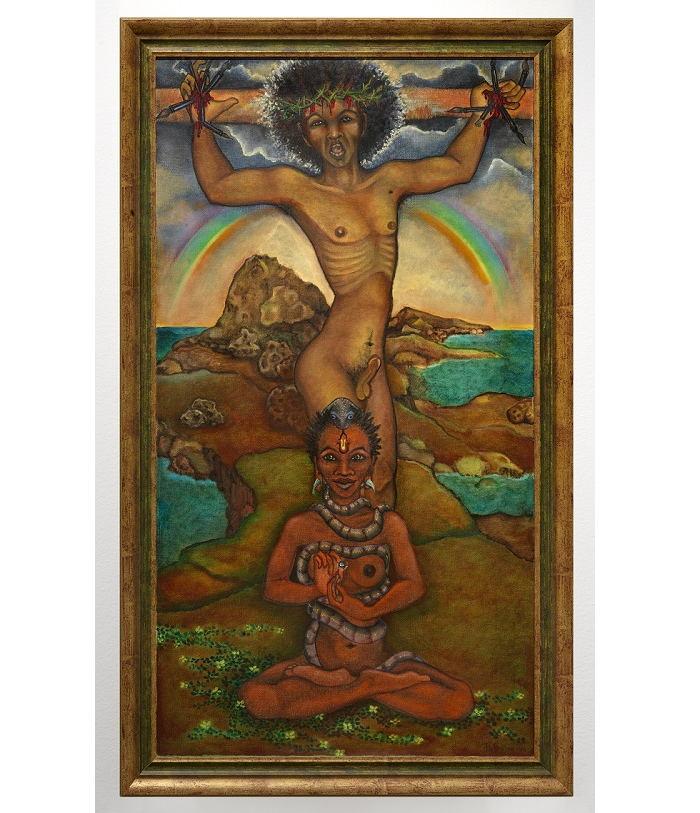Work by multi-talented artist Felix de Rooy joins the collection
News — Aug 25, 2023
The Stedelijk Museum announces the acquisition of work by multi-talented artist Felix de Rooy as the exhibition Felix de Rooy – Apocalypse, draws to a close. An artist, director, curator, collector and outspoken social critic, De Rooy is a unique voice in Dutch art. Together, the acquisitions provide an overview of the wide range of themes, styles and media in the oeuvre of this ‘homo universalis’. His retrospective runs until 3 September.
Rein Wolfs, director Stedelijk Museum Amsterdam: Felix de Rooy’s work has been a huge influence on many Caribbean and Dutch artists and makers. We are grateful that we were able to offer him the platform. As an artist, playwright, director, curator and collector, he tackled issues long before they were addressed by the mainstream media or politics such the negative legacy of colonialism, everyday racism and the meaning of Afro-Caribbean and queer identities in art. With the addition of his work to the collection, he now leaves a tangible memory for future generations at the Stedelijk as well. We are also especially grateful to the artist for donating the assemblage ‘Marks of the Soul / Markanan di Alma’.

The Stedelijk is adding several works to its collection from the exhibition Felix de Rooy – Apocalypse. The painting Kharma na Curaçao (1976), in which he combines aesthetic and spiritual elements from different cultures, is an important example of the artist’s early work. Christ has an erection and is nailed to the cross with paintbrushes. Since the 1970s, the artist has used this kind of work to resist the dogmas of Christianity. In the collages The Rape of the Earth I & The Rape of the Earth II (1992), the artist speculates on the demise of the planet as well as (the potency of) a new beginning. By blending contemporary and historical images in the collages, he connects contrasting ideas. The Stedelijk also acquires the assemblage Marks of the Soul / Markanan di Alma (1998), which foregrounds De Rooy’s interest in reusing, re-appropriating and recontextualizing existing images and objects. Rooted in different geographies, practices and beliefs, these elements intertwine, creating a visceral metaphor for the lasting impact of the transatlantic slave trade.
ABOUT THE EXHIBITION
The exhibition Felix de Rooy – Apocalypse presents five decades of multi-talented Felix de Rooy’s artistic practice, featuring visual art in countless manifestations - from paintings to assemblages and from (digital) collages to wall hangings - as well as films, documentation of his theater performances and exhibitions and work from his collection. According to Parool, he is “half a dozen artists united in one body” and NRC writes “Felix de Rooy is a ‘homo universalis’, an artist who refuses to be confined to a single style or one medium.” Far ahead of his time, De Rooy explored topics that are still relevant today, including the negative legacy of colonialism, everyday racism and the meaning of Afro-Caribbean and queer identities in art. The exhibition will be on view until 3 September.
